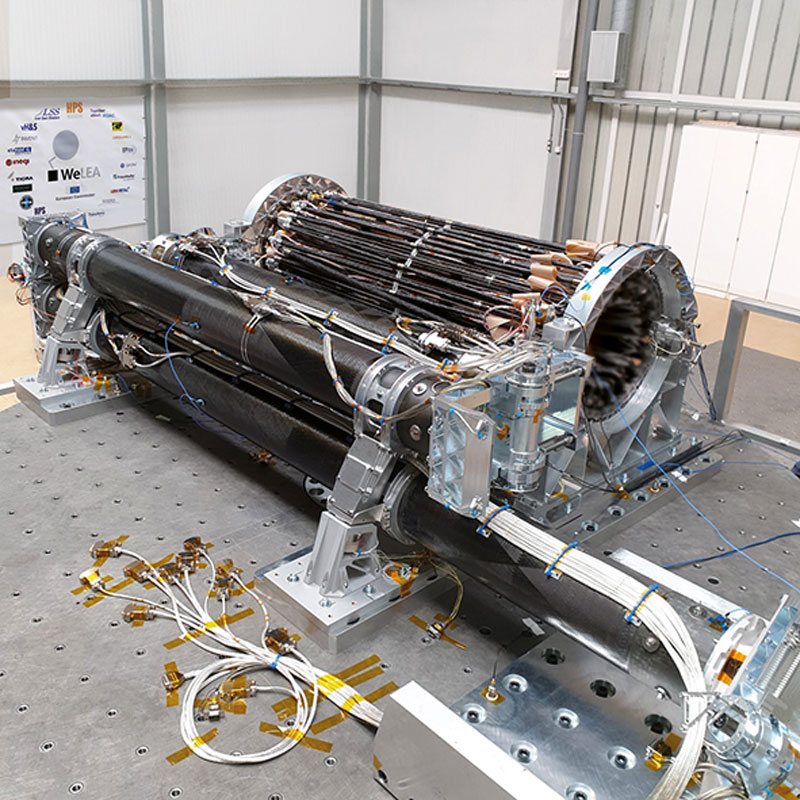December 2021
HPS Space News
World premiere: Deorbit-Turbosail „ADEO“ by HPS has been selected to safeguard sustainability of Europe´s own constellation
By 2025, Europe will have its own constellation of satellites to ensure sovereign capacity for both commercial and institutional communication channels. Fast Internet, autonomous mobility at sea, on ground and in the air, automatic exchange of information between technical installations, support for military and humanitarian actions, and other applications for public authorities, companies, and citizens realised by a consortium formed by Reflex, laser specialist Mynaric and launch service provider Isar Aerospace.
The European Commission is also very interested in such a concentration of innovative forces and selected the UN:IO consortium for one of its two study tenders addressed to companies from the so-called “New Space” domain and endowed with 1.4 million euros. For the EU, a secure, very fast and, above all, sovereign communications network for Europe is a top priority. In addition, it must meet sustainability criteria for the EU’s “Green Deal” – and that is where ADEO comes in: The ADEO subsystem is a scalable, deployable drag augmentation device that uses the residual Earth atmosphere present in Low Earth Orbit (LEO) to passively de-orbit satellites between 1 to 1.500 kg. For the de-orbit manoeuvre, a large surface is deployed which multiplies the drag effect of the satellite´s surface significantly: The drag force is increased causing accelerated decay in orbit altitude. Advantageous about a drag augmentation device is that it does not require any active steering and can be designed for passive attitude stabilization, thereby making it also applicable for non-operational, tumbling spacecrafts. The passive ADEO subsystem requires neither extra propulsion nor engine, which makes it lighter in comparison to active subsystems.
So, after years of development, tests and zero-g- and in-orbit-verifications ADEO is now going to celebrate its world premiere as central element bringing sustainability to space on angel wings.
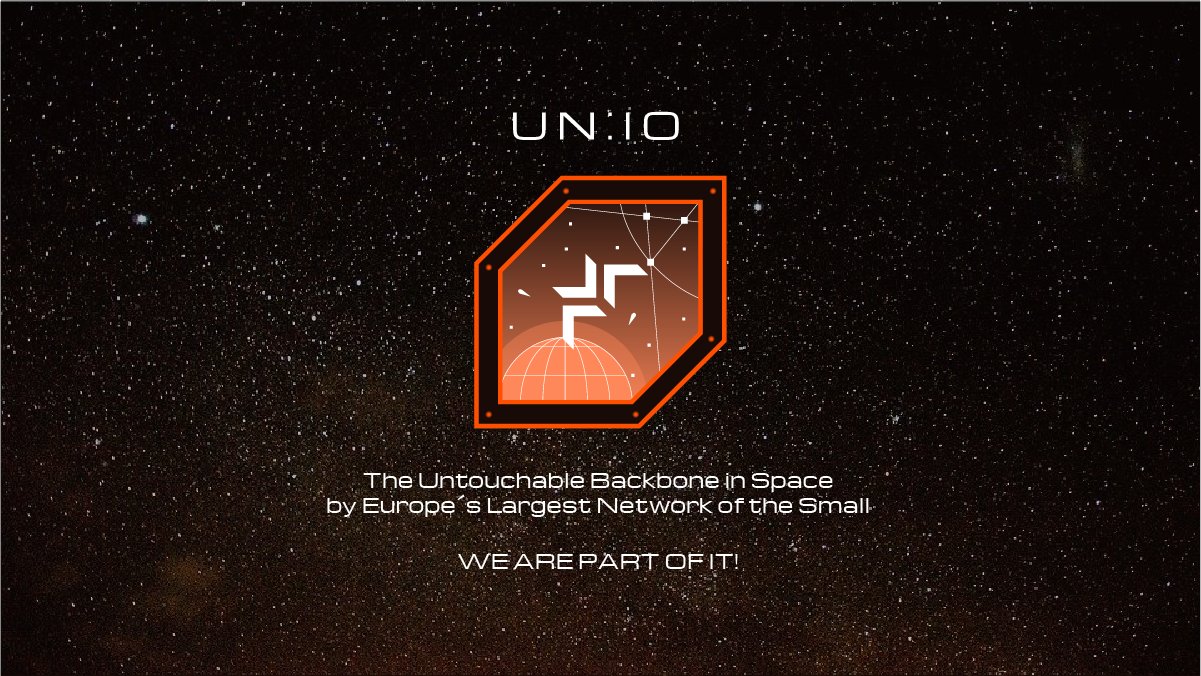
August 2021
HPS receives final GO to build HERA antenna which is to broadcast deep space showdown in 2024
The first defense mission of planet Earth against asteroid aggressors from space will be broadcasted live through an antenna in deep space built by Munich-based aerospace company HPS. It prevailed in two competitive preliminary design phase contracts within Europe.
Experts are convinced that the HPS model offers the highest possible signal stability thanks to its extreme resistance to deformation in orbit and OHB Bremen, prime of the ESA mission, submitted this week the respective „Approval to proceed“ (ATP) to HPS for the rest of the development. The antenna must be delivered in November 2022 for the mission start in 2024. The schedule is tough: the critical design review will take place as early as September.
See also full story here: https://www.hps-gmbh.com/hera-high-noon-in-deep-space/
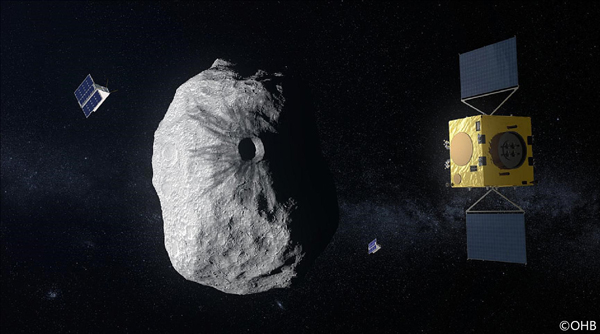
July 2021
Space specialists close innovation gap for threatening situations
In extreme cases, humans can do without many things for a certain period of time: clothing for months, depending on the weather, food for about three weeks and drinking water for up to three days. There is only one thing he really needs urgently and immediately: the possibility to communicate.
This applies to all life-threatening situations of both a civilian and military nature, to missions on the front line of aid in disaster areas, but also to journalistic reporting from cut-off places, to expeditions in remote regions, to police and intelligence special forces and, of course, also to military missions.
To date, the communications technology market for similar applications has been dominated by products with limited range, vulnerability to jamming and/or unwieldy dimensions and weight that can only be handled by vehicles.
To change this, under the consortium leadership of the Munich-based aerospace specialist for antenna technology HPS (Munich) the following partners have joined forces:
- The antenna manufacturer MTEX (Wiesbaden, Germany) with a focus on ground stations
- the start-up Blackwave (Ottobrunn) with the economic series production of complex carbon components
- the Chair of Carbon Composites (LCC) at the Technical University of Munich for the conception of innovative lightweight reflector blade
- the University of the German Armed Forces for defining user requirements and conducting antenna field tests.
The aim is to develop a complete system for bidirectional satellite communication on the basis of preliminary developments already carried out by HPS in the context of the program ILKA (“Integrated Deployable Lightweight Manpack Complete Antenna”) is a backpack antenna for communication “to go” (KEAN means deployable compact backpack antenna) with the following specifications:
- Conformity to satellite operators (e.g. EUTELSAT, INTELSAT).
- Ku-band, 1.2 m diameter, also X-band capable
- Including communication system, electronics, battery, tripod, backpack carrying system
- Total weight under 20 kg
- Setup in under 15 minutes from backpack transport to satellite link
- Innovative cybernetic folding mechanism based on the opening and closing of flowers
- Design and definition of production-ready components and production processes for rapid transition to volume production in larger quantities.
HPS, MTEX and BLACKWAVE are contributing significant in-house funding; the DLR Space Agency, through its Telecommunications Department, is supporting the project with an additional 670.000 euros. From launch in April 2021 to the start of the test phase in fall 2022, only 18 months are planned for the entire development. After the concept definition now in July 2021, the detailed design of the complete system will follow. The main driver of the ambitious schedule is the commercial and institutional expressions of interest already triggered by the initial pre-development of the system, amongst others from the Indo-Pacific region.
Have a look at our short clip: Man Pack Ku-band Antenna for Mobile Special Operations
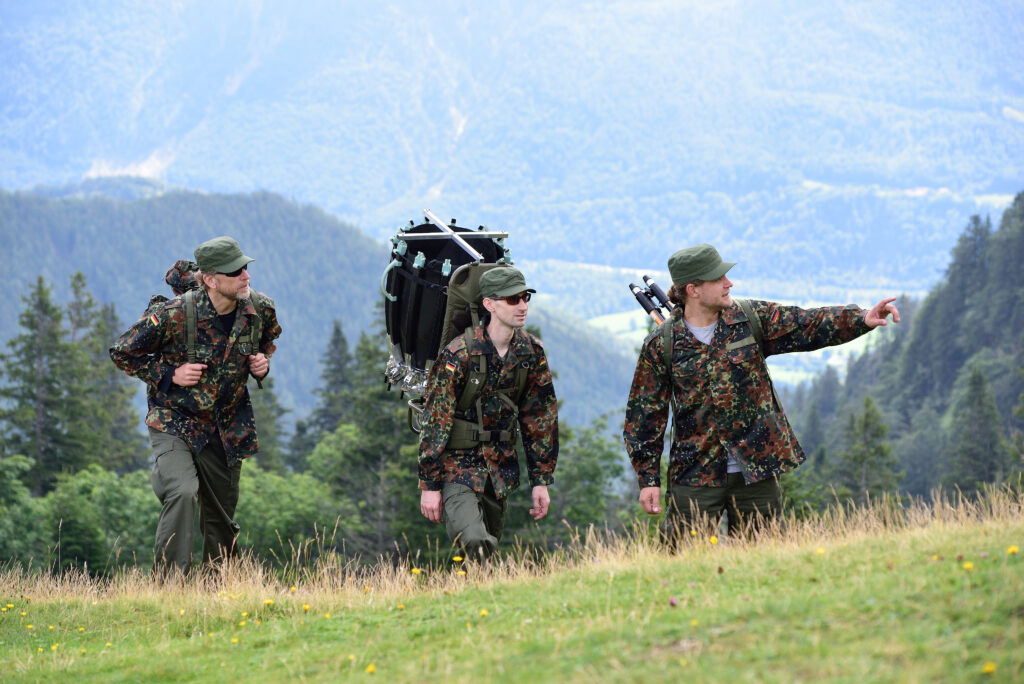
July 2021
Falcon 9 rocket successfully deploys innovative technology to keep space sustainably clean
On Wednesday, June 30, at 21.31 hrs CEST a Falcon 9 by Space X took off to a transporter 2-mission from legendary spaceport Cape Canaveral, Florida. On board: Italian NewSpace company D-Orbit´s ION Satellite Carrier on its „Wild Ride“-mission with tech-passengers from 11 countries, among that HPS’s ADEO-N2, named „Show me your Wings“. ION was successfully separated from the launcher exactly one hour after liftoff.
The ION-platform itself will now seperate one payload after the other on their respective orbits for in-orbit validation tests, until finally the platform turns into a test object itself, since it will be brought back „home“ by ADEO, the world’s only industrial NewSpace drag sail of its kind for the multiple accelerated return of retired satellites. The idea behind it: „Just keep space „cleangreen“ by launching only what you have equipped with a device to bring it quickly back home after use“, says Ernst K. Pfeiffer, CEO of German spacetech company HPS. ADEO is available from HPS in different versions tailored to the size and weight of the spacecraft in question. In this case, it is one of the smallest versions, weighing just 800 grams, with dimensions of only 10x10x10 centimeters and a sail area of 3.6 square meters.
HPS CEO Ernst K. Pfeiffer is convinced that ADEO came at exactly the right time to promote sustainable NewSpace development by avoiding the threat of apocalyptic space debris scenarios, despite rapidly growing constellations. In this context, Pfeiffer emphasizes the excellent R&D support provided by engineers and test facilities of the DLR Institute of Space Systems in Bremen, as well as the various economic development support contracts and grants provided by ESA, DLR and the Free State of Bavaria.
The implementation of the technology developed by HPS’s NewSpace Team at Munich headquarters was largely supported by the hands of engineers and technicians of the Romanian subsidiary and Romanian workshops. This is now, according to Pfeiffer, „our clear advantage having all in one company: heritage from institutional space, a tailored „internal start-up department“, a steadily growing house in Bucharest and several trustful development and production partners. New and expanded challenges to innovation and manufacturing are already waiting.“
At the end of the nominal ION-mission, in front of its “eyes” of the integrated cameras, the ADEO braking sail module unfolds, shows its „wings“ and leads ION to residue-free disposal by incineration in the atmosphere much quicker than without the sail. The first 100 km of descent will be monitored intensively. This is planned to happen in a mission slot between December ´21 and January ´22. This mission now is the last verification in a series that also encompasses a first flight on Rocket Lab´s Electron in 2018 and several parabolic flights until 2021.
With this inflight-proof of maturity ADEO is targeted to go then into serial production for customers already waiting in the U.S., Europe and Asia.
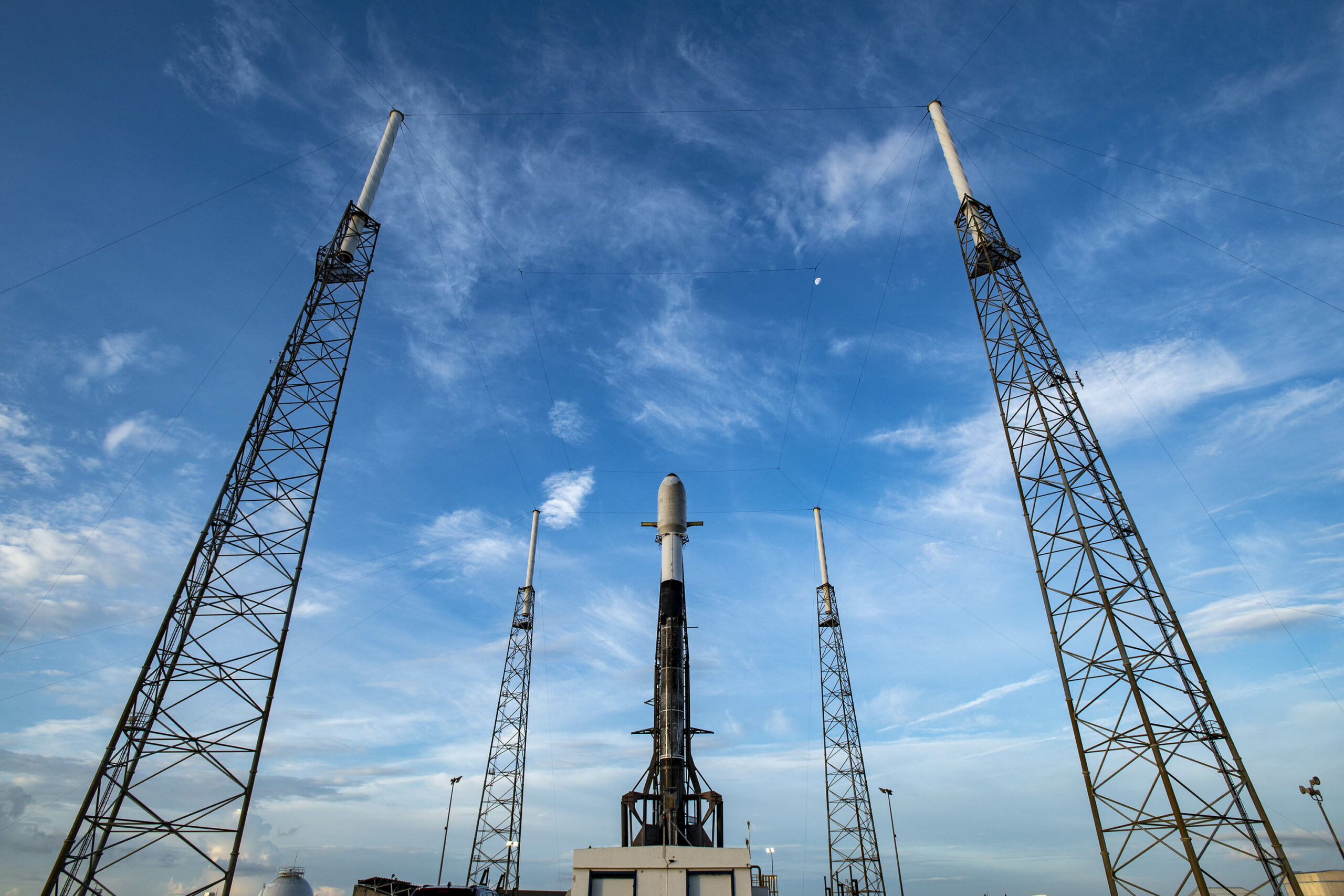

LEA-X5: New Movie on the completion of the European 5m X-band LDRS
Juli 2021
Gladly we announce with a new 20-minutes-movie the completion of the H2020-development „LEA-X5“, the 5m class European Large Deployable Reflector Subsystem (LDRS) operating in X-band.
The film itself is of course showing recent environmental and deployment tests, but it is mainly about PEOPLE, who are space engineers and space enthusiasts, and what they can achieve with combined powers and brains. These people, together with the enablers European Commission and European Space Agency, are making the achievement of „European Non-dependance“ happen.
LEA-X5 is a full LDRS-Subsystem (lead by HPS, Germany) and comprises the
- 5m diameter X-band reflector assembly (lead by LSS, Germany)
- the 5m long deployable arm assembly (lead by HPS, Germany),
- hinges & HDRMs (RUAG, DE),
- deployment electronics (vH&S, DE),
- thermal hardware (HPS/FHP).
Further partners of the H2020-consortium have been: INVENT (DE), FHP (PT), INEGI (PT), TICRA (DK), LUMA (SW), HPTEX (DE), ARQUIMEA(SP), HPS (RO), ETAMAX (DE), WSS (DE), ONERA (FR), TAS (FR), OHB (DE), Airbus (DE).
Most of the consortium members are introduced in the movie, inluding many interviews.
Take your time and enjoy the spirit of doing big things: LEA-X5 – European 5m X-band LDRS Completed (Final Report 06/2021) – YouTube
Best regards,
Your WeLEA-Consortium
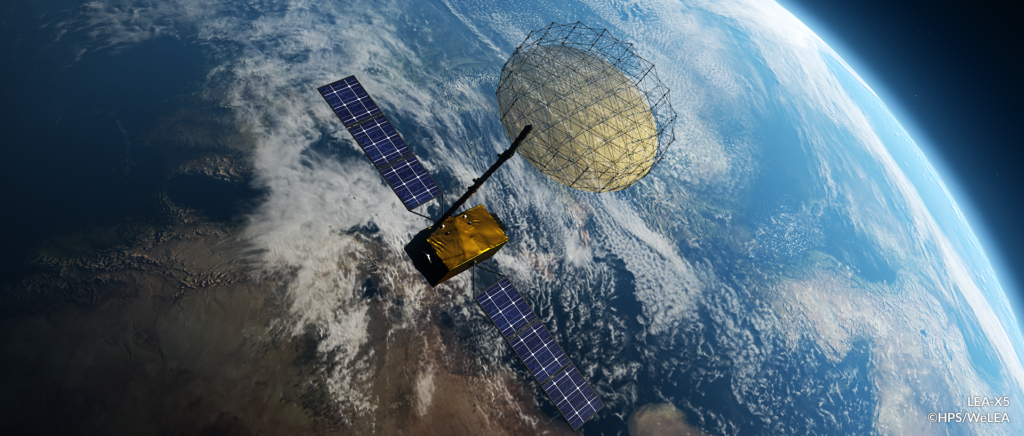
May 2021
D-Orbit (Italy) and HPS (Germany, Romania) agree on flight for
ADEO on ION Satellite Carrier in June 2021
After 6 years of development, including a zero-G parabolic campaign and a first test flight end 2018 with Rocket Lab’s ELECTRON, HPS signed on 30.04.2021 the contract with D-Orbit for the flight of the ADEO-N, named „Show me your Wings“, on the space logistics company’s orbital tranportation vehicle ION Satellite Carrier. The launch of the „Wild Ride“ Mission will take place already summer this year from a launch site in USA.
ADEO, the world’s only industrial NewSpace drag sail of its kind for the multiple accelerated return of retired satellites, is available from HPS in different versions tailored to the size and weight of the spacecraft in question. In this case, it is one of the smallest versions, weighing less than one kilogram, with dimensions of only 10x10x10 centimeters and a sail area of 3.6 square meters. It has been integrated directly into the ION platform at D-Obit now, mid May. ION is a space vehicle that can transport satellites in orbit and release them individually into distinct orbital slots. At the end of the nominal ION-mission, in front of its “eyes” of the integrated cameras, the ADEO braking sail module unfolds, shows its „wings“ and leads ION to residue-free disposal by incineration in the atmosphere much quicker than without the sail. The first 100 km of descent will be monitored intensively.
HPS CEO Ernst K. Pfeiffer is convinced that ADEO came at exactly the right time to promote sustainable NewSpace development by avoiding the threat of apocalyptic space debris scenarios, despite rapidly growing constellations. In this context, Pfeiffer emphasizes the excellent R&D support provided by engineers and test facilities of the DLR Institute of Space Systems in Bremen, as well as the various economic development support contracts and grants provided by ESA, DLR and the Free State of Bavaria.
The implementation of the technology developed by HPS’s NewSpace Team at Munich headquarters was largely supported by the hands of engineers and technicians of the Romanian subsidiary and Romanian workshops. This is now, according to Pfeiffer, our clear advantage having all in one company: heritage from institutional space, a tailored „internal start-up department“, a steadily growing house in Bucharest and several trustful development and production partners. New and expanded challenges to innovation and manufacturing are already waiting.
According to Renato Panesi, co-founder and CCO of D-Orbit: „We are very happy to have a chance to work with HPS on this project: sustainability in general has always been a relevant aspect of our identity, and with HPS we share a common vision aiming to a sustainable access to space. Being able to help HPS to test a new and innovative technology like ADEO to help control the increment of space debris is a point of pride for us. To HPS is reserved the grand finale of the mission and, while we are going to „enjoy the ride“, we are really looking forward to it“.
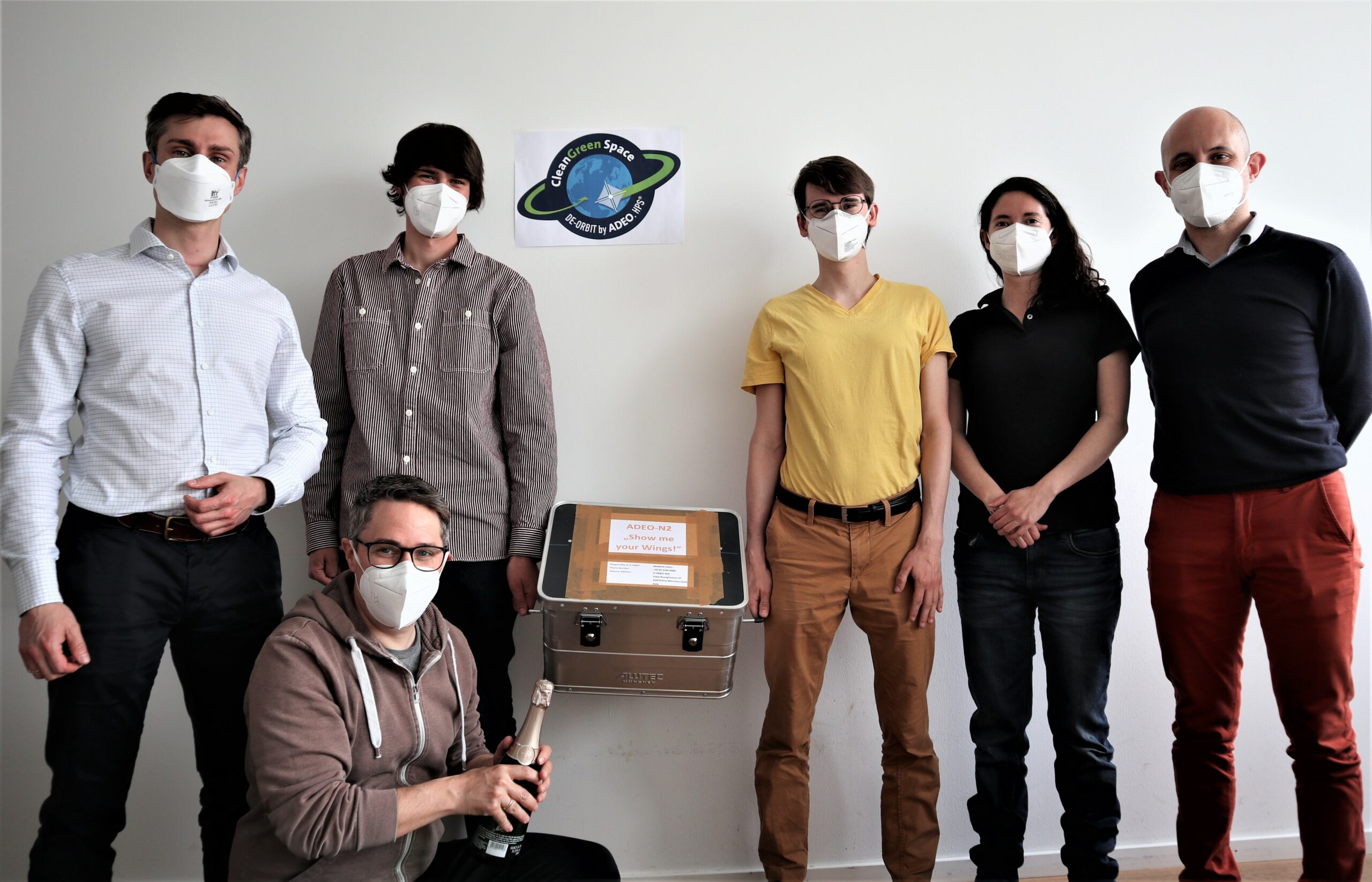
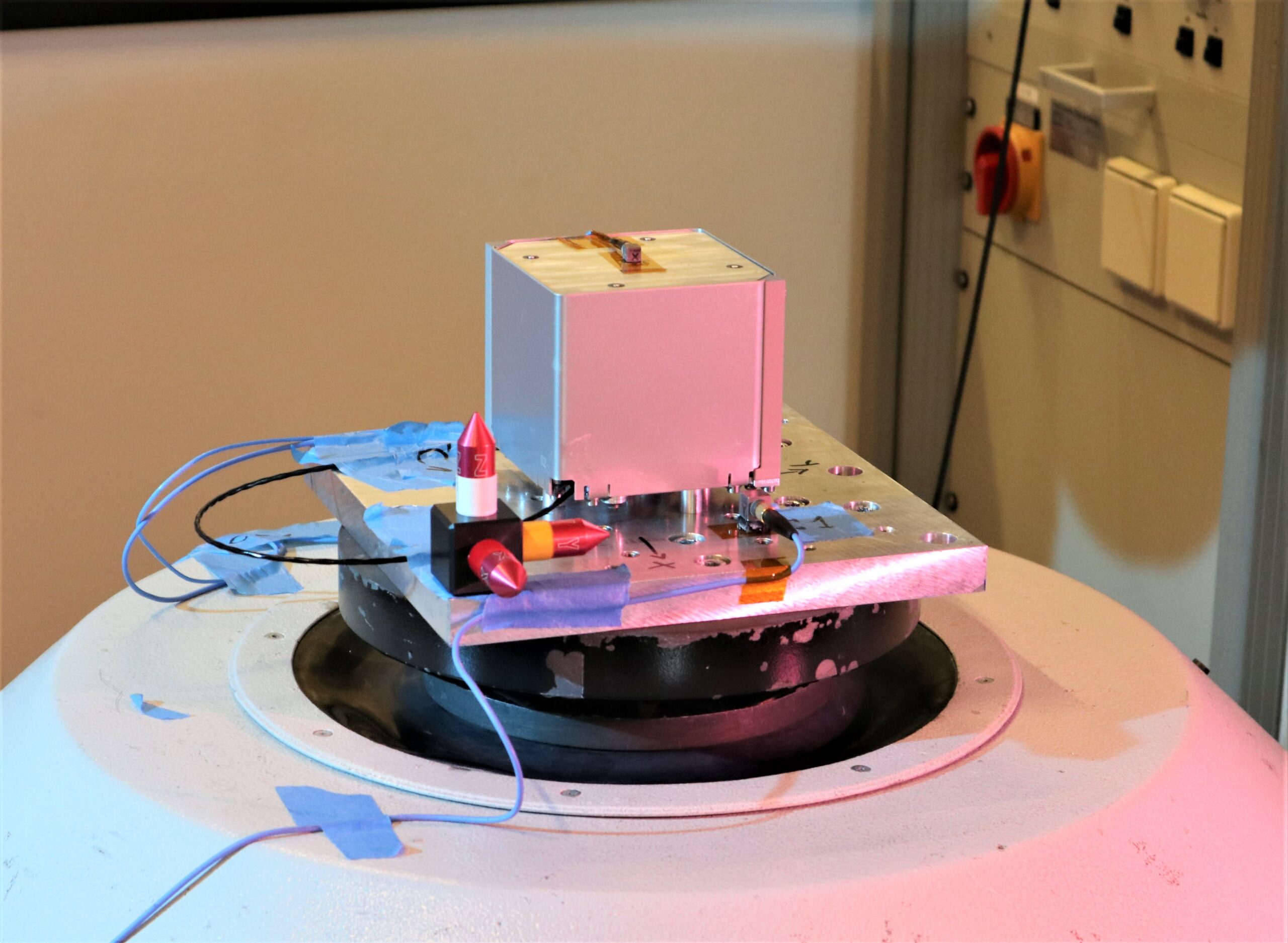
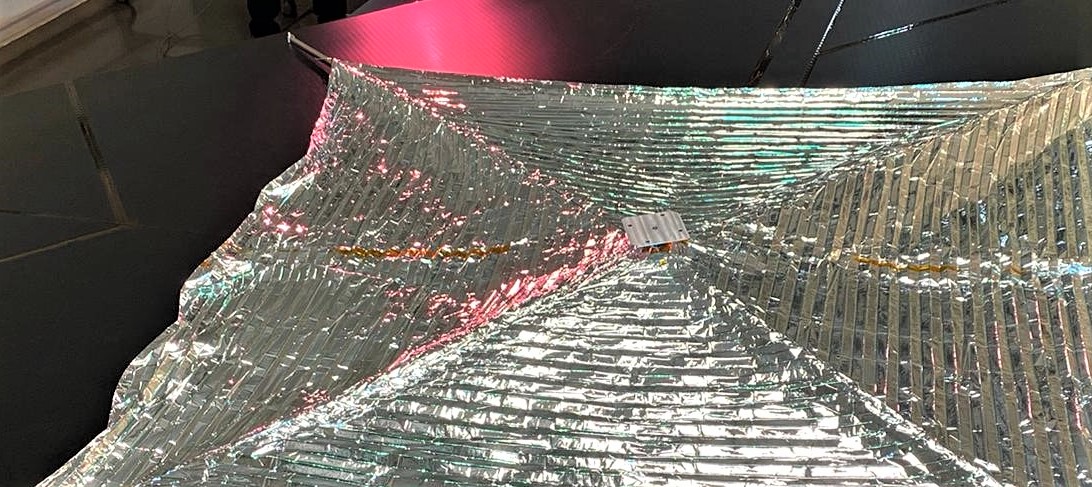
March 2021
Europe´s innovative deployable antenna technology takes the next hurdle
With the successful test of the Deployable Assembly Arm (DAA), which connects a Deployable Reflector Assembly (DRA) to the satellite, just completed at INEGI, the European LEA consortium led by HPS has cleared the next hurdle in the technical realization of Europe’s new antenna technology.
The 5m long DAA consists of 3 hinge mechanisms and 2 HDRMs (both by RUAG Space Germany), Release Mechanisms (by Arquimea, Spain), three CFRP tube segments (by INVENT, Germany), Metal Fittings (partly by HPS Romania), Deployment Control Electronics & EGSE (by von Hoerner & Sulger). Focus of the tests have been the verification of a) the functional full deployment (which takes in total 25 min.), b) a high pointing accuracy of the arm and c) the verification of the mathematical thermo-elastic models.
INEGI (Portugal) is the main partner for the arm deployment test and a good partner of HPS for over 13 years now. INEGI was responsible for the 0-g-simulation Test Stand and the Thermo-elastic Distortion Test Stand. Despite the pandemic and all restrictions the teams could manage this progress with highest motivation and closest possible contact between the INEGI/HPS team on-site in Porto and the HPS-engineers in Germany. HPS is responsible for the DAA and also for the implementation management of the whole LEA-activity. The total LEA-team encompasses 15 partners from 7 countries; the program started in the framework of H2020 in November 2017. The arm deployment test and the TED-test (thermo-elastic distortion) was one of the last tests of this H2020 activity.
The next step – starting still in March – is the environmental test (vibration and thermal vacuum) of the full LDR-Subsystem (Reflector, Arm and HDRM, all connected), which will be performed at INTA in Madrid, Spain.
“LEA-X5” (5m reflector diameter, 5m arm length, X-band application for Earth Observation and Telecommunications) is meanwhile seen as one of the precursing technology developments for the current Copernicus CIMR Mission.

Manfred Krischke and Peter Müller-Brühl take over still available minority shares
March 2021
Renowned tech and space entrepreneurs join HPS Munich
It was sealed with a short signature ceremony on March 17, 2021: Manfred Krischke and Peter Müller-Brühl are now co-partners of the leading German space company HPS GmbH, Munich.
Last year, the specialist for technically sophisticated and innovative mechanical-, thermal-, and antenna-subsystems prevailed against all competition as the consortium leader of a group of fifteen space companies from seven countries, and with the order for the development and production of a self-deploying 8 meter arm- and reflector-subsystem for earth observation, the 100 Million Euro limit broken for a single project.

In addition, the company is, under the management of the main managing partner Dr. Ernst K. Pfeiffer, in a worldwide race to develop an automatic return system (so-called de-orbiting) for disused satellites and rocket parts; options for the self-deploying decelerating sail ADEO in various sizes are already being accepted from all over the world. And finally, HPS Munich, just like the subsidiary in Romania, is well positioned in conventional business with project orders from the areas of telecommunications, space exploration, earth observation and security, despite all the adversities of the corona situation. HPS remains in the possession of German space enthusiasts: in addition to the new investors and main shareholder CEO Pfeiffer, the HPS group of shareholders also includes a private investor and four senior employees. In addition, there is a small participation by another space SME.
“This mixture of ‘New Space’ and conventional ESA, DLR and EU business is a solid basis for long-term sustainable business success”, Krischke is certain: “At HPS, courageous innovative genius and many years of experience come together for what is feasible. That is the formula for success of HPS. “Peter Müller-Brühl sees great opportunities in the potential of HPS: “Similar to Clean-Energy, Clean-Green-Space will very soon also become a global socio-political demand in view of the tens of thousands of planned satellites space debris is already an important topic for many people. With the deorbiting solution from HPS, we will bring sustainability to the space industry”.
Last but not least, these prospects are reflected in the company’s value. HPS does not give exact figures, however, HPS CEO Pfeiffer notes: “We see it as a great honor that Messrs. Müller-Brühl and Krischke, as experienced space entrepreneurs, decided to engage themselves in HPS, especially because of the high potential for increased value recognize via the NewSapce or commercial space line from HPS that we – I am sure – will lift very quickly together with our new members of the ‘HPS family’.”
Indeed, Krischke and Müller-Brühl are highly experienced high-tech and space managers – Kayser Threde, RapidEye, Daimler, GreenCom Networks are just a few key words from their professional careers. What they have in common is the founding of Cloudeo AG as the largest independent platform for satellite-based geodata and applications. In addition, both are active as members of the supervisory board of Mynaric AG, the world’s leading technology provider for satellite-based telecommunications via laser, another “Shooting Star” in the German space sky.
March 2021
Arm and Reflector of LEA-X5 Successfully Mated to Form Complete Subsystem
Fifteen companies – mostly SMEs – from seven countries and one goal: a deployable 5-meter X-band-antenna as a preliminary development for the CIMR project, developed under the European H2020 program (2017-2021). For the first time ever, such a complete subsystem (HPS) has now been successfully assembled in Europe from the reflector- (LSS) and arm- (HPS) assemblies. Previously, the test deployment of the arm and reflector – each individually – had already been successfully passed.
LEA-X5-Subsystem is now at the premises of the consortium´s highly reliable test partner INTA in Spain, where vibration tests for the subsystem are on the agenda in the presence of the LSS- and HPS-teams. In a third round of testing, the subsystem will have to prove itself capable of withstanding the conditions of the thermal chamber.
The next complete subsystem-hardware in this context – the CIMR LDRS-EQM – will be assembled end 2023.
With the key technology behind LEA-X5, the continent is decisively expanding its independence from non-European sources.
